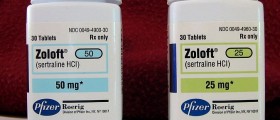
Epilepsy drugs are also known under the name antiepileptic medications. There are many different types of these drugs but all of them have one thing in common-control over seizures.
Prior choosing the most convenient antiepileptic drug, doctors need to evaluate the type of seizures person is suffering from. It is possible to combine two such drugs. Also, if one drug is not well tolerated, it is easily replaced with a suitable substitute.
Antiepileptic Drugs Indications and Side Effects
Tegretol is prescribed for partial as well as generalized tonic-clonic seizures. The drug is commonly blamed for fatigue and vision changes. Some people also complain about nausea and dizziness. Skin rash may occur as well.
Zarontin is a drug prescribed to people suffering from absent seizures. Its most common side effects include gastrointestinal problems such as loss of appetite and subsequent weight loss, nausea and vomiting.
Felbatol is an excellent choice for generalized seizures but it may also cause digestive difficulties, insomnia, headache and depression. This drug is not so commonly prescribed because it can induce liver or bone marrow failure.
Gabitril treats both partial and generalized seizures. Its side effects are physical (dizziness, weakness etc.) or psychological (anxiety, irritability and confusion).
Keppra can only bring under control partial seizures. It is, on the other hand, blamed for behavioral changes as well as fatigue.
Lamictal treats all types of seizures and rarely causes any side effects.
Lyrica is efficient only against partial seizures. It, however, may induce somnolence, dizziness, dry mouth, peripheral swelling, weight gain and blurred vision.
Neurontin is an excellent choice because it treats all types of seizures and has only few side effects present during the first weeks of treatment.
Dilantin can quickly bring all seizures under control, especially if administered intravenously. It may, however, cause fatigue, dizziness, hirsutism, acne, rash and slurred speech.
Topamax has different side effects including somnolence, dizziness, speech problems as well as some cognitive and memory difficulties. Vision problems and nervousness occur as well.
Trileptal is administered for partial seizures only. Its side effects are related to problems with vision, headache, dizziness and weakness.
Depakene is a drug of choice for all types of seizures. It can cause many side effects and the most frequently reported are gastrointestinal problems, hair loss, tremor, weight gain, and many behavioral changes such as irritability, reduced attention, decreased thinking etc. It is not used for a long period of time because patients may end up with bone thinning and women develop menstrual irregularities. The most severe side effects include hearing loss and damage to the liver, pancreas as well as blood clotting problems.
Zonegran is efficient against partial seizures. Its side effects are well tolerated and the most severe ones are kidney stones and unsteady gait.
Finally, Valium is a drug used only for acute epileptic seizure treatment in the emergency room. Tiredness, unsteady walking, gastrointestinal problems and depression are common side effects of Valium. Patients easily develop tolerance to this drug and this is why it is not so frequently prescribed.
Antiepileptic Drugs Prescription Guidelines
Proper treatment and dosage of drugs are established within a few moths. There may be some treatment adjustments. Some patients require blood test while taking medications.
Finally, if patients do not respond to several drugs, the underlying cause may be non-epileptic in nature.
















Your thoughts on this
Loading...